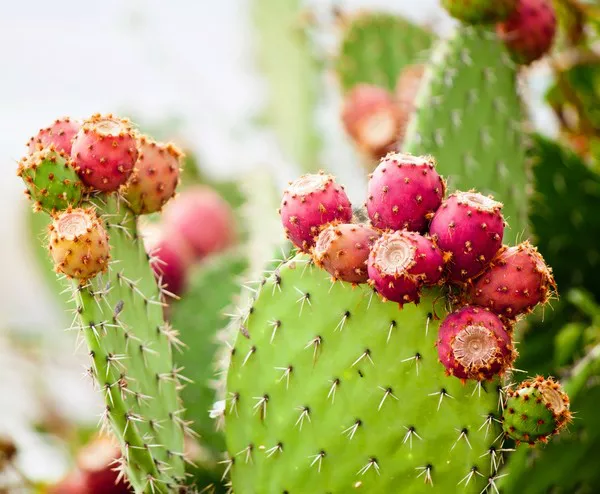Cacti are renowned for their unique beauty and resilience, making them a popular choice for indoor and outdoor gardens alike. While these hardy plants can thrive in harsh conditions, getting them to bloom with vibrant flowers can be a rewarding challenge for plant enthusiasts. In this article, we will explore the various factors and techniques to encourage your cactus to bloom successfully. From providing the right environment and care to understanding the flowering process, we will cover all the essential aspects to help your cactus reach its full flowering potential.
SEE ALSO: Unveiling the Beauty of Flowering Cacti: A Guide to Cacti That Bloom
1. Choosing the Right Cactus
Not all cacti species bloom, and even among flowering varieties, some are more likely to produce flowers than others. When selecting a cactus for its flowers, research the species to ensure it has a history of blooming under the right conditions. Popular flowering cacti include Epiphyllums, Rebutia, and Mammillaria.
2. Providing Adequate Light
Proper lighting is crucial for cacti to bloom. These desert plants require ample sunlight to stimulate flower production. Place your cactus in a location where it can receive at least six hours of bright, indirect sunlight per day. South-facing windows are often ideal for maximum light exposure.
3. Temperature and Humidity
Cacti thrive in warm temperatures, but many require a period of cooler temperatures to initiate flower buds. During the active growing season, maintain temperatures between 70°F and 85°F (21°C – 29°C). In winter, a cooler period of around 50°F to 60°F (10°C – 15°C) for a few weeks can encourage flowering.
Most cacti prefer low humidity levels. Dry air helps prevent diseases and rot, but excessively dry air can lead to dehydration. Aim for a humidity level between 20% and 40%.
4. Watering Wisely
Overwatering is one of the most common mistakes made with cacti. These plants are adapted to survive in arid conditions, so they need infrequent but deep watering. During the growing season, water the cactus when the top inch of soil feels dry to the touch. In the dormant season, water sparingly to avoid root rot.
5. Fertilization
To support flowering, use a balanced fertilizer with higher phosphorus content (the middle number in NPK ratios). This nutrient encourages flower production. However, avoid excessive fertilization, as it can lead to nutrient imbalances or even inhibit flowering. Apply the fertilizer according to the manufacturer’s instructions, typically during the growing season.
6. Soil Mix
Using the right soil mix is vital for cacti. A well-draining soil blend specifically designed for cacti and succulents is essential. Avoid soils that retain too much water, as this can lead to root rot. You can also add perlite or pumice to increase drainage and aeration.
7. Repotting
Cacti prefer slightly crowded conditions, so repot only when necessary. When a cactus becomes root-bound or outgrows its container, it’s time to repot. The best time for repotting is in the spring before the growing season starts. Handle the cactus with care and choose a slightly larger pot with drainage holes.
8. Flowering and the Role of Light and Darkness
Understanding the flowering process of cacti can greatly assist in encouraging blooming. Most cacti need a period of longer nights and cooler temperatures to stimulate flowering. This can be achieved by simulating natural light changes indoors. Starting around late summer, gradually reduce the amount of light your cactus receives to approximately 12 hours per day. This decrease in light mimics the seasonal changes in the natural environment.
9. Pruning and Deadheading
Pruning can be beneficial for cacti that have become overgrown or have damaged or diseased parts. Regularly inspect your cactus and remove any dead or decaying tissue to promote healthier growth and flowering. Additionally, deadheading spent flowers can encourage the plant to produce more blooms.
10. Pest and Disease Management
A healthy cactus is more likely to bloom, so it’s essential to prevent and manage pests and diseases. Common pests include mealybugs, spider mites, and scale insects. Check your cactus regularly for signs of infestation and take appropriate action promptly.
Conclusion
Growing a flowering cactus can be a rewarding experience, showcasing the natural beauty of these fascinating plants. By providing the right environment, including adequate light, temperature, and humidity, and adopting proper care practices such as watering, fertilizing, and repotting, you can greatly increase your cactus’s chances of blooming. Understanding the flowering process and using light manipulation to simulate seasonal changes can further enhance the likelihood of abundant and vibrant blooms. With patience and dedication, you can transform your cactus into a stunning flowering spectacle that will be the envy of any garden or indoor plant collection.


